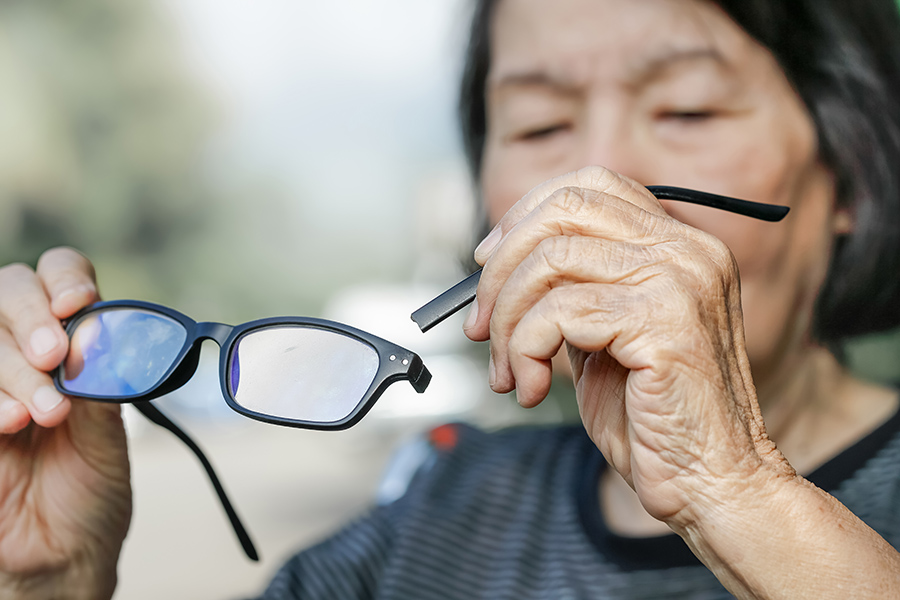June is National Alzheimer’s and Brain Awareness Month, a global effort to promote education regarding neurological conditions for doctors, patients, and caregivers alike. Together, we can provide support for those who live with this disease and their dedicated caregivers.
History
Alzheimer’s is complicated. There’s a lot we don’t know despite over a century of prevalence in written medical journals. The first recorded incidence of Alzheimer’s was in 1907 in Frankfurt, Germany by Dr. Alois Alzheimer, who documented the tragic mental decline of a woman named Auguste Deter.
Despite the first known patient of Alzheimer’s being a woman, a large portion of research done throughout the past century has been done exclusively on men[1]. This was done to control the experiment as tightly as possible so that the only variable would be the subject of research[2] (i.e. if they have been treated with a drug or not, whether they have a disease or not, etc.), and while this may make sense from a research standpoint, it creates a gap in information regarding how Alzheimer’s presents in women, which we have still not filled in entirely.
What is Alzheimer’s Disease?
Alzheimer’s Disease (AD) is a degenerative brain disease categorized by loss of brain functions due to a buildup of proteins in the brain. Symptoms of Alzheimer’s include, but are not limited to:
- Memory loss
- Difficulty completing once-simple tasks (ex. Brushing your teeth or making the bed)
- Confusion
- Difficulty speaking or writing
- Changes in mood or personality
Aging and its Risk Factors
The greatest risk factor for AD is something everyone does: aging. The older we get, the more likely we are to develop a type of dementia, such as Alzheimer’s[3].
Life Expectancy and Aging
Studies have proven that women live longer than men, and given that age is the predominant risk factor for AD, it stands to reason that women aren’t necessarily predisposed to the disease, but are statistically more inclined to experience the highest risk factor due to longer lifespans. This can potentially explain the higher prevalence of AD in women versus men, with two-thirds of Alzheimer’s patients being women.
Hormonal Differences
Researchers believe the answer is hormones. Every human body contains a balance of estrogens and androgens, which are the steroid hormones that develop sex-specific characteristics in women and men, respectively. They perform numerous protective actions for the adult brain, offering benefits such as neural functioning and resilience to mental decline[4]. As we age, we see a natural decrease in levels of androgens and estrogens in the body, leaving us vulnerable to diseases such as AD.
Hormonal Fluctuations
Hormone fluctuations occur naturally throughout our lifetimes. Some studies, though incomplete, suggest that the loss of sex-specific hormones during aging may increase the occurrence of AD. Women commonly experience fluctuations in their estrogen levels over time for a variety of reasons.
Ways that women might experience a depletion of estrogen include:
- Pregnancy
- Menopause (either naturally occurring or surgically induced)
- Natural progression of age
Menopause may be a major component of women’s risk factor for developing AD. Studies have shown that estrogen levels drop significantly during and after menopause[5], meaning people begin to lose the beneficial qualities that it provides for the body. Tests done on women with AD have shown decreased levels of estrogen in the brain[6] when compared to women without AD. While the logical solution would be to supplement estrogen with hormone replacement, different studies have demonstrated conflicting results on the subject. Some research has shown estrogen replacement to be beneficial in preventing AD, while others demonstrated an increased risk. These back-and-forth results have led researchers to believe in a potential “window of opportunity” where estrogen replacement during or immediately after menopause might reduce the risk of AD, however the few studies done on this hypothesis have not yielded any significant results[7].
Genetics
Another risk factor for having Alzheimer’s is genetics. Scientists have been able to locate several genes that have the potential to influence AD pathology, although research in this specific field is fairly new and very limited.
The ApoE4 Gene
One such example is the ApoE gene and its variants. Genetic testing has shown a prevalence of the ApoE4 gene in adults with AD, suggesting a possible correlation. Studies done on people with AD have yielded the following findings:
- Nearly two-thirds of all participants had the ApoE4 gene.
- About 25% of the population are likely to have this specific gene[8].
- Simply having this gene does not necessarily mean you will develop Alzheimer’s, your risk is greatly increased.
- Men and women are equally likely to have this gene.
- When this specific gene is present in women there is a greater likelihood that she will develop AD later in life[9].
- Researchers are still not sure why the ApoE4 gene effects women in this way.
As of right now, you can be tested for the ApoE gene and its variants, either by talking to your doctor or by taking an at home test, although the at home genetic tests are not as accurate as one your doctor might perform.
Chromosomes
When compared to men, women are routinely diagnosed later in life but experience a more rapid mental decline after the initial diagnosis. But why? Researchers have begun looking into the correlation between the X chromosome and AD, suggesting that perhaps the X chromosome has something to do with cognitive ability. Their argument is as follows:
- In XX people, the second X chromosome is usually “silenced” during the beginning stages of embryotic development.
- Recent research has suggested that a small percentage of genes from the second X chromosome could escape silencing[10].
- The doubling up of genetic material could potentially increase cognitive resilience.
A recent study at the University of California, San Francisco by Dena Dubal has been looking at the correlation between having two X chromosomes and their relation to AD in mice. They found:
- A gene from the second X chromosome that escaped silencing is associated with the cleanup mechanisms within the body, which could be linked to the buildup of amyloid and tau proteins in the brain.
- These proteins are naturally occurring in the body and provide various functions within it, however when they build up in the brain faster than they can be removed it creates a number of neurological problems that are tied to Alzheimer’s.
- Therefore, people with XX chromosomes may be better genetically equipped to prolong the onset of AD symptoms more so than people with XY, which would explain why women are typically diagnosed later in life.
- It would explain the rapid decline of women post-diagnosis, suggesting that an additional X chromosome may increase one’s resilience to the buildup of amyloid and tau proteins and prolong the ability to function with the disease, however once the threshold of buildup in the brain is met, severe symptoms become inevitable.[11]
- Typically with most types of dementia, the disease will begin to form 10-20 years before symptoms present themselves, which in women is usually around the end of menopause.
Social Risk Factors
Some research suggests the influence social factors have on AD risk is just as important as biological ones.
Social risk factors may include but are not limited to:
- Stress
- Lack of sleep
- Substance abuse (such as alcoholism)
- Loneliness and social isolation
- Education and related brain health
It is difficult to say how strongly these factors contribute to an individual’s perceived risk as it is increasingly challenging to differentiate between social and biological risk factors.
For example, completing more levels of higher education is associated with increased opportunities for prolonged mental stimulation throughout life, which can delay onset of AD and other cognitive diseases. Another example is women being more likely to adopt a caregiver role than men, which can contribute to increased stress levels and/or incidence of depression, as well as sleep problems and substance abuse, which all increase the risk of AD[12].
The Future of Alzheimer’s
We still don’t have enough information about Alzheimer’s. It’s clear that there are discrepancies between men and women with AD, although there is still more we don’t know. These unknowns could be the gateway to a solution for this currently uncurable disease, but unfortunately only time will tell.
Resources
If you or a loved one are suffering from Alzheimer’s Disease, there are resources available to help you.
- Alzheimer’s Association Website (includes a 24/7 helpline)
- Alzheimer’s Foundation of America (includes 24/7 helpline)
- Shield Healthcare Community Site
Sources
- Alois Alzheimer and Alzheimer’s disease: a centennial perspective
- Alois Alzheimer: His Life and Times – PMC
- 10 Early Signs and Symptoms of Alzheimer’s & Dementia | alz.org
- Why is dementia different for women? | Alzheimer’s Society
- Estrogen: Hormone, Function, Levels & Imbalances
- Androgens: Function, Levels & Related Disorders
- Differences Between Women and Men in Incidence Rates of Dementia and Alzheimer’s Disease – PMC
- Journal of Neuroscience Research | JNR Neuroscience Journal | Wiley Online Library
- How Accurate Are DNA Self-Testing Kits?
- Why women experience Alzheimer’s disease differently from men
- Why women’s brains are more resilient: it could be their ‘silent’ X chromosome
- Study reveals how APOE4 gene may increase risk for dementia | National Institute on Aging
- Autoimmune Diseases: Types, Symptoms & Treatments
- Non-Medical Factors that Affect Alzheimer’s Disease and Related Dementias Risk | Alzheimer’s Disease and Dementia | CDC
- ARE THERE SEX DIFFERENCES IN THE IMMUNE SYSTEM? – PMC
- Why Women Have Stronger Immune Systems than Men | Live Science
- Amyloids in Site-Specific Autoimmune Reactions and Inflammatory Responses – PMC
- Social isolation and dementia risk | Alzheimer’s Society
- Alzheimer’s Association | Alzheimer’s Disease & Dementia Help
- Alzheimer’s Foundation of America | Homepage
- All Communities | Shield HealthCare
- Aging activates escape of the silent X chromosome in the female mouse hippocampus | Science Advances
- Alzheimer’s Disease in Older Men vs. Older Women
- Tau Protein and Alzheimer’s Disease: What’s the Connection?
[1] Alzheimer’s Society “Why is Dementia Different in Women?”
[2] Alzheimer’s Society “Why is Dementia Different for Women?”
[3] Alzheimer’s Society “Why is Dementia Different for Women?”
[4] Christian J. Pike “Sex and the Development of Alzheimer’s Disease”
[5] Cleveland Clinic ”Estrogen”
[6] Christian J. Pike “Sex and the Development of Alzheimer’s Disease”
[7] Christian J. Pike “Sex and the Development of Alzheimer’s Disease”
[8] National Institute on Aging “Study Reveals How ApoE4 Gene May Increase Risk for Dementia”
[9] Alzheimer’s Society “Why is Dementia Different for Women?”
[10] Katherine Bourzac “Why Women Experience Alzheimer’s Disease Differently from Men”
[11] Katherine Bourzac “Why Women Experience Alzheimer’s Disease Differently from Men”
[12] Katherine Bourzac “Why Women Experience Alzheimer’s Disease Differently from Men”





















